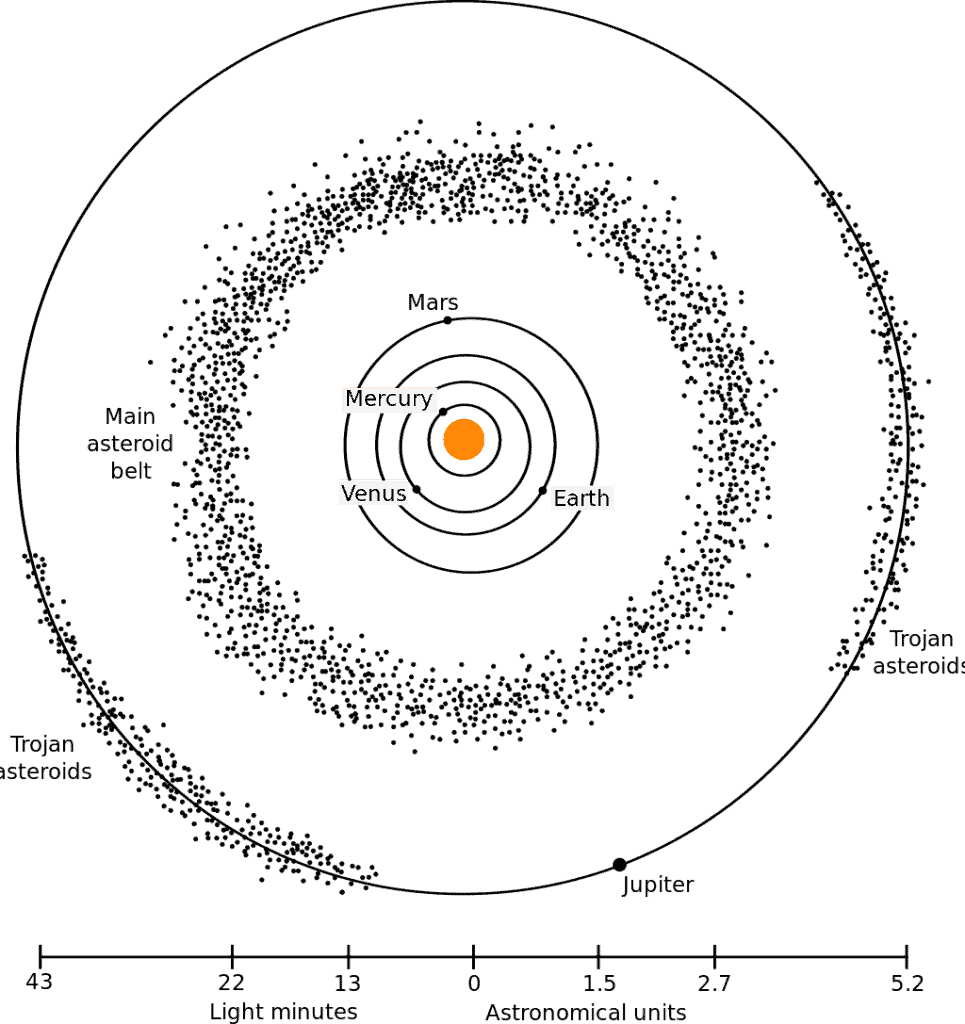begin quote from:
https://nineplanets.org/asteroid-belt/
Asteroid Belt Facts
Between the orbits of Mars and Jupiter, the asteroid belt contains an estimated 1.9 asteroids. The total mass of all objects in the asteroid belt is still less than that of Earth’s Moon.
The asteroid belt is located between the inner and the outer planets and is home to thousands of rocks and debris known as asteroids and some of the dwarf planets. All of these orbit the Sun.

Some asteroids do orbit in space near to Earth and some are forced out of the asteroid belt by gravity and sent towards the outer solar system instead.
What Exactly Is The Asteroid Belt?
There are hundreds of thousands of asteroids in the asteroid belt, but almost half of the entire mass is made up of just four objects. These objects are the dwarf planet Ceres, and three other asteroids called Vesta, Pallas and Hygiea.
The diameters of Vesta, Pallas and Hygiea are over 400km and Ceres is even bigger at 950km diameter.
Of the many thousands of asteroids in the asteroid belt, Ceres is the only one large enough to be classified as a “dwarf planet”. Apart from these four objects, the remaining objects in the asteroid belt range in size from small rocks right down to dust particles.
How Far Away Is The Asteroid Belt?
The asteroid belt is between the planets Mars and Jupiter. It is located about 2.2 to 3.2 Astronomical Units (AU) from the Sun. That is somewhere between 329-478 million km away.
The asteroid belt is huge and the space between each of the asteroids is over 600,000 miles. The circumference of Earth is only 24,901.45 miles, which means that the distance between objects in the asteroid belt is more than 24 times the circumference of Earth.
Interesting Facts About The Asteroid Belt
- The asteroid belt was first discovered in 1801. This is when Giuseppe Piazzi discovered Ceres. Ceres is a dwarf planet and was the first object to be observed in the asteroid belt. Fifteen months later a large asteroid was spotted and named Pallas. Over the next few decades more objects were found and in the 1850s astronomers began calling the region “the asteroid belt”. By the year 2000 over 100,000 asteroids had been discovered.
- The asteroid belt is a disc shape, located between the orbits of Mars and Jupiter.
- The asteroids are made of rock and metal and are all irregularly shaped.
- The size of the objects within the asteroid belt range from being as small as a dust particle to almost 1000km wide. The largest is the dwarf planet Ceres. Ceres is the only dwarf planet in the asteroid belt.
- The four largest objects in the belt are Ceres, Vesta, Pallas and Hygiea.
- Many people picture the belt crowded with asteroids. However this is not the case. The asteroid belt is so vast that the objects are widely spread out, in fact spacecraft have managed to easily travel through the belt without collision.
- Astronomers used to believe that the objects within the asteroid belt were the remnant of a planet smaller than Earth’s moon that had exploded. However this theory is now accepted to be untrue and it is thought the asteroids were never part of a planet.
- Gravitational forces can throw asteroids out of the belt and send them towards the inner solar system. Asteroids are similar to comets but lack the coma which appears as a tail.
- Sometimes the asteroid belt is called the main belt to help differentiate between other groups of asteroids in the solar system.

No comments:
Post a Comment